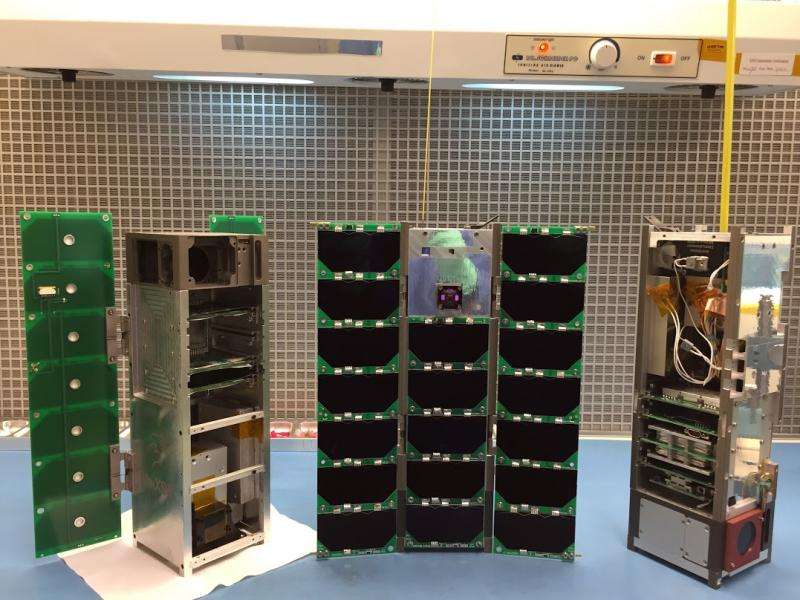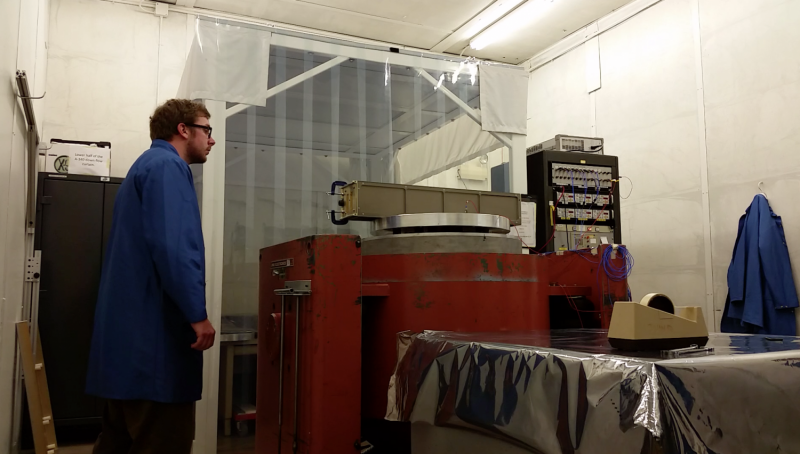MinXSS CubeSat launches to ISS to study Sun's soft X-rays

On Dec. 4, the bread loaf-sized Miniature X-Ray Solar Spectrometer, or MinXSS, CubeSat is scheduled to rocket to space alongside thousands of pounds of supplies and science experiments destined for the International Space Station. MinXSS will study the spectroscopy of soft x-rays, a particular type of light from the sun. This light is highly variable and can impact Earth's upper atmosphere, which can in turn affect communications such as GPS and radio.
CubeSats are a low-cost alternative to traditional satellite missions. Instead of carrying a dozen or more custom-built instruments, CubeSats are designed to take specific scientific observations with only a few instruments, often built from off-the-shelf components. MinXSS, for example, is using an extendable tape measure as a radio antenna and a standard, off-the-shelf, laboratory x-ray spectrometer.
MinXSS is a project of the University of Colorado Boulder, and the Laboratory for Atmospheric and Space Physics. Because of their lower price tags, universities run many CubeSat missions from start to finish, providing opportunities for students to take part in all parts of a mission.
"I've worked on nearly every aspect of MinXSS," said James Mason, a graduate student studying aerospace engineering at the University of Colorado Boulder. "Students can get involved with everything on a CubeSat mission—systems engineering, management, manufacturing, and even on-orbit science analysis."
The MinXSS CubeSat will study the sun's impact on Earth's upper atmosphere by measuring the variability of the intensity and spectrum of soft X-rays emitted by the sun. The sun always emits some amount of soft x-rays, but the intensity of these emissions can increase by a factor of thousands during events on the sun called flares. The interaction of soft X-rays with the Earth's upper atmosphere can hamper communications by changing the atmospheric region called the ionosphere, effecting how communications signals travel through this region.

MinXSS will hitch a ride to space aboard Orbital ATK's Cygnus cargo spacecraft, which is scheduled to launch on a United Launch Alliance Atlas V rocket Dec. 4, 2015, at 5:33 pm EST. Once delivered to the ISS, the MinXSS CubeSat will deploy into space in January 2016 and operate for up to 12 months.
More information: lasp.colorado.edu/home/mission … /quick-facts-minxss/
Provided by NASA



















